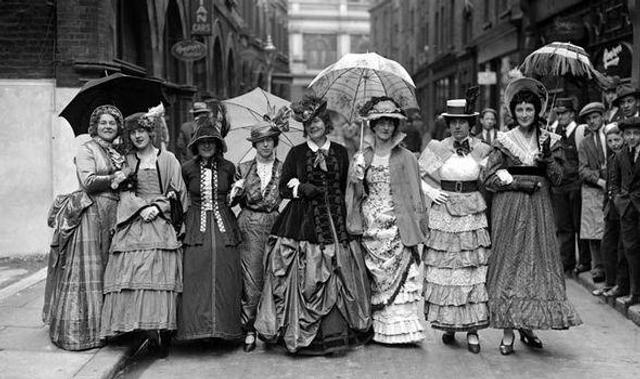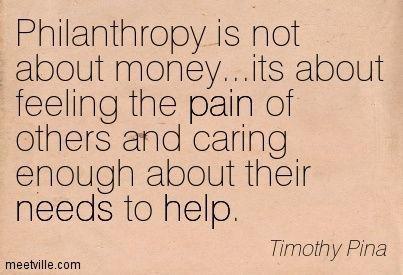A timeline of modern British philanthropy
In this fascinating article, Rhodri Davies takes you through a brief but insightful history of British giving.
- Written by
- Rhodri Davies
- Added
- August 20, 2020
Philanthropy has a long history in the United Kingdom (UK). From the mid 1500s, the modern notion of philanthropy, based on secular concerns about poverty and the social issues of the day emerged to replace the medieval concept of almsgiving, which was all about securing your immortal soul by carrying out your religious duty to give via the church. Since then, philanthropy has played a vital role in shaping the society we live in. I trace this history, and the shifting relationship between philanthropy, the state and democracy in my book, Public Good by Private Means: How philanthropy shapes Britain.
But for those of you who haven’t rushed out to buy your copy yet (or have no intention of doing so), I have put together a timeline of what I think are the key events and developments in the history of UK philanthropy. As with any timeline, this is somewhat idiosyncratic, and I have almost certainly left out some things that others would see as absolutely pivotal, but hopefully it gives you a flavour of the broad sweep of how philanthropy in this country has developed over the last 400 years and the factors that have influenced it.
1530s: THE REFORMATION AND THE TUDORS

Henry VIII, motivated by his desire to wed Anne Boleyn, initiates the split with the Catholic Church in Rome. The ensuing schism between Protestant and Catholic leads to the Reformation in England, in which many of the buildings and assets of the Catholic Church are reclaimed by the crown. This is a major factor in shaping modern philanthropy, because the differences between Protestant and Catholic teachings about poverty and charity mean that a new, secular conception of giving begins to emerge which shifts the focus from the status of the donor’s immortal soul to the actual impact of the donation in the present day.
A plethora of wills and eulogies from Protestant donors of the time documents their gifts to charity and their desire to ground these gifts in the society of the day. Driven by these new Protestant ideals, the late 1500s becomes a golden age of philanthropy with merchants like Thomas Sutton, who founded Charterhouse Hospital, and Thomas Gresham, who founded Gresham College, leaving vast charitable legacies.
1601: THE STATUTE OF CHARITABLE USES
As part of the package of Poor Law legislation introduced by the Tudors to provide a system of government-provided welfare for the first time, Elizabeth I introduces a law aimed at making charitable trusts more accountable. The Statute itself does not aim to provide a legal definition of ‘charity’, but in its introduction there is a list of examples of purposes that would count as legitimately charitable, such as ‘relief of aged impotent and poor people’, ‘repair of bridges, ports, havens, causeways, churches, seabanks and highways’ and ‘maintenance for houses of correction’. Over time people come to interpret this list as a legal definition of charity. This forms the legal basis on which UK charity law – and the charity law of many other countries such as the US – has rested ever since.
1736: THE STATUTE OF MORTMAIN
A piece of legislation designed to address concerns about people leaving gifts to the church in their will and thereby increasing the power of the clergy, which is already a cause for concern. It decrees that gifts of land, or money for the purchase of land, for charitable purposes are illegal, unless strict conditions have been met. As a result, many charitable trusts go to great efforts to try and argue that they are not in fact charitable, so deathbed gifts to them are legitimate. At the same time, the judiciary attempts to interpret as many things as possible as charitable, because they want money to pass to heirs wherever possible rather than end up in the hands of charitable trusts or the church. There are thus many cases of gifts being found to be charitable, such as an 1801 legacy left to maintain a small botanical garden that had been created by one Benjamin Robertson in Stockwell, London which was declared invalid on the grounds of being charitable. Conversely, however, there are no cases relating to the Statute of Mortmain in which a judge decided a purpose was not in fact charitable. This has a lasting impact in leaving us with a broad, liberal interpretation of charitable purposes within the law.
Late 1700s: ‘ASSOCIATED PHILANTHROPY’
Philanthropy was originally an interaction of individuals – individuals with money giving directly to individuals who needed it – because almsgiving traditionally took place within small communities where people more than likely knew each other. But, at the same time as the introduction of the modern notion of a corporation as a standalone legal entity begins to revolutionise the world of business practice, many philanthropists also start to come together and form organisations in which they can pool donations and combine their efforts. A great many hospitals are set up and funded by drawing on subscriptions from a wide range of individuals, rather than relying on single, large gifts. This forms the template for the modern idea of a charity we have today.
1801: THE CENSUS
This first comprehensive picture of the make-up of society has both a positive and negative impact on philanthropy. It provides valuable insight into many social problems – such as mortality rates among children and the deprivation suffered by the elderly – but also highlights the sheer scale of many of these problems, and thus leads to widespread acceptance of the need for state intervention.
MID TO LATE 1800s: THE VICTORIAN GOLDEN AGE

The explosive growth of manufacturing and industry leads Britain to dominate the world through its empire. Back at home, the industrial boom is matched by a boom in philanthropy. Archetypal Victorian philanthropists like Angela Burdett-Coutts, George Peabody, George Cadbury and Andrew Carnegie become household names through their philanthropic deeds as much as their business interests.
Burdett-Coutts worked alongside Charles Dickens to address the problems of poverty in the slums of London; Peabody created affordable housing for the working classes; Cadbury revolutionised employment practices and also promoted pacifism driven by his Quaker faith, and Carnegie gave vast sums to public institutions (most famously libraries) in the UK and the US.
EARLY 20TH CENTURY: GROWTH OF THE STATE
Recognition of the need for state intervention has intensified by the end of the Victorian era, with many proclaiming philanthropy a failed experiment. The social historian Benjamin Kirkman Gray, writing in 1905, declares that ‘private individuals were confident of their power to discharge a public function, and the government was wiling to have it so. It was left to experience to determine that the work was ill done and by no means equal to the need.’
Despite this, the Liberal governments of the early 20th Century continue to be positive about philanthropy and charities while laying the groundwork for far greater state involvement in welfare services. For instance Winston Churchill, during his time as a Liberal, states a belief that it would be best to ‘underpin the existing voluntary agencies by a comprehensive system – necessarily at a lower level – of state action.’
1948 to 1960s: BIRTH OF THE WELFARE STATE
The introduction of the National Health Service (NHS) in 1948 marks the birth of the modern welfare state, and prompts a great deal of debate about the ongoing relevance and role of philanthropy. William Beveridge, one of the key architects of the welfare state, publishes a book outlining his belief in the ongoing importance of voluntary action, but nevertheless philanthropy enters something of a doldrum period in the 1950s. The Nathan Committee, a government committee set up to consider the role of voluntary action following the advent of the welfare state concludes that ‘certain growing pains have been evident in the years during which this change has come about.’
Many in the Labour movement believe that the welfare state has made philanthropy an anachronism, because the government is now going to take responsibility for all the things that were traditionally within the remit of charity, and that philanthropy should be allowed to wither away.
1960s AND 70s: RENEWED FOCUS ON CAMPAIGNING
The growth of interest in participation, identity politics and rights issues – exemplified by things like the women’s liberation movement, the Aldermarston marches in protest against nuclear proliferation, and the demonstrations against the Vietnam war – suggests a way forward for philanthropy because a renewed focus on the value of campaigning and advocacy within a welfare state comes to the fore, and philanthropic organisations are ideally placed to fill this role.

1980s TO PRESENT DAY: MASS MARKET GIVING
Major TV fundraising initiatives such as Live Aid, Comic Relief and Children in Need bring the idea of charity right into people’s homes and prompt huge numbers of donations. The introduction of Gift Aid in 1990 means that, for the first time, a tax incentive for cash donations is available to the general public, which signals government support for the idea of mass participation in charitable giving and enables people to increase the value of their donations. New forms of technology and media such as text messaging, the internet and social media then bring the work of charities into people’s lives like never before.
Editor’s notes: This is, of course, only a whistle-stop tour of the highlights. If you are interested in finding out more, check out Rhodri’s book, Public Good by Private Means: How philanthropy shapes Britain.
This article was first published on the Charities Aid Foundation (CAF) website in March 2016.
















